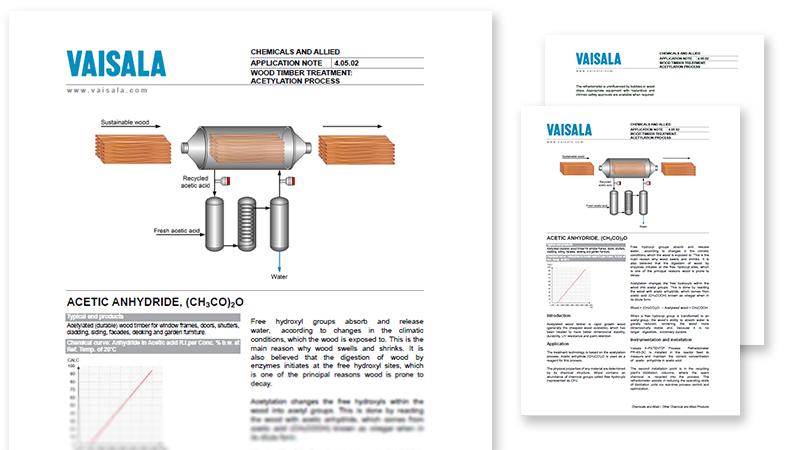Real-time process control and optimization in acetylation process of wood timber treatment
Acetylated wood timber is a rapid growth wood which has been treated for improved dimensional stability, durability, UV resistance and paint retention.
The treatment technology is based on the acetylation process where acetic anhydride (CH3CO)2O is used as a reagent for this process.
Free hydroxyl, contained in the chemical structure of the wood, absorb and release water. Acetylation changes the free hydroxyls within the wood into acetyl groups. This is done by reacting the wood with acetic anhydride, which comes from acetic acid (CH3COOH) known as vinegar.
The Vaisala Polaris™ process refractometer is used to measure and maintain the correct concentration of acetic anhydride in acetic acid. The refractometer is also used in the recycling plant’s distillation columns, where the spent chemical is recycled into the process. The refractometer assists in reducing the operating costs of distillation units via real-time process control and optimization.
Download the application note in PDF by filling the form.
Go back to all Chemicals & Allied Products applications

You can modify your preference settings or unsubscribe at any time here
